Guide:
Types of Jumps in Show Jumping
Confused by the different types of jumps in show jumping? No worries, we’ve selected 16 of the most common types of jumps and outlined them for you.
Ellinor
Thu 5 Sep - 24
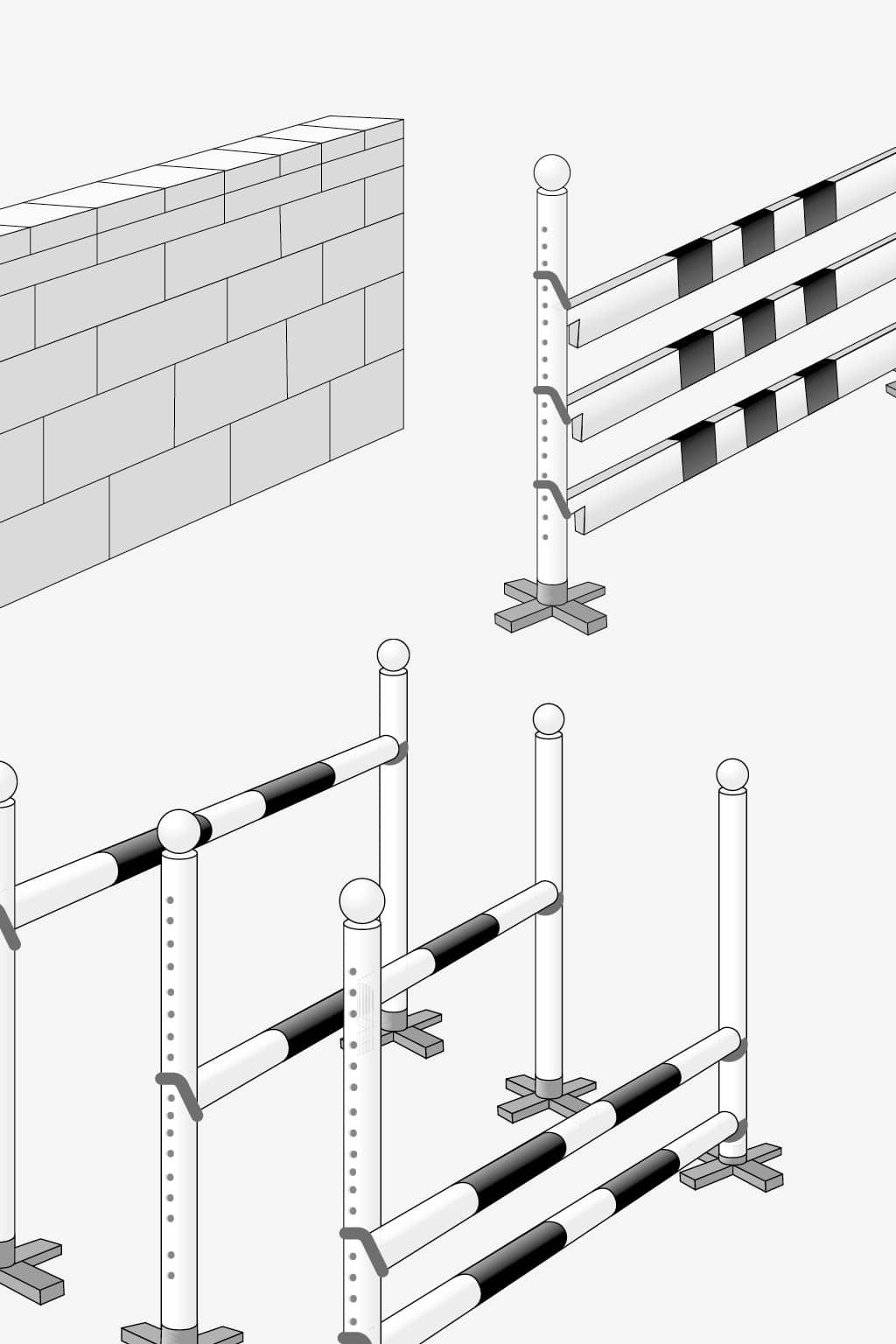
Guide:
Types of Jumps in Show Jumping
Confused by the different types of jumps in show jumping? No worries, we’ve selected 16 of the most common types of jumps and outlined them for you.
Ellinor
Thu 5 Sep - 24
In show jumping, the jumps are, without a doubt, at the absolute center of attention. They come in different colors, constellations and combinations – and can seem just as daunting as magnificent. There are many kinds of jumps, but in this article, we have listed the most common ones in the show jumping arenas out there.
Show jumping is one of the most common equestrian disciplines. It originates from the 18th century’s English countryside, where obstacles were a part of traditional fox hunting. Since the early 1900s, show jumping has been included in the Olympic Games.
Today, there are different forms of jumping classes and disciplines (such as show jumping, hunting, eventing, cross-country etc.), but what they all have in common is the obstacles that the horse is meant to jump.
So, here is a selection of different types of jumps:
1. Vertical
The vertical is, as the name suggests, a vertical jump with a number of either poles or planks (i.e. “flat poles”).
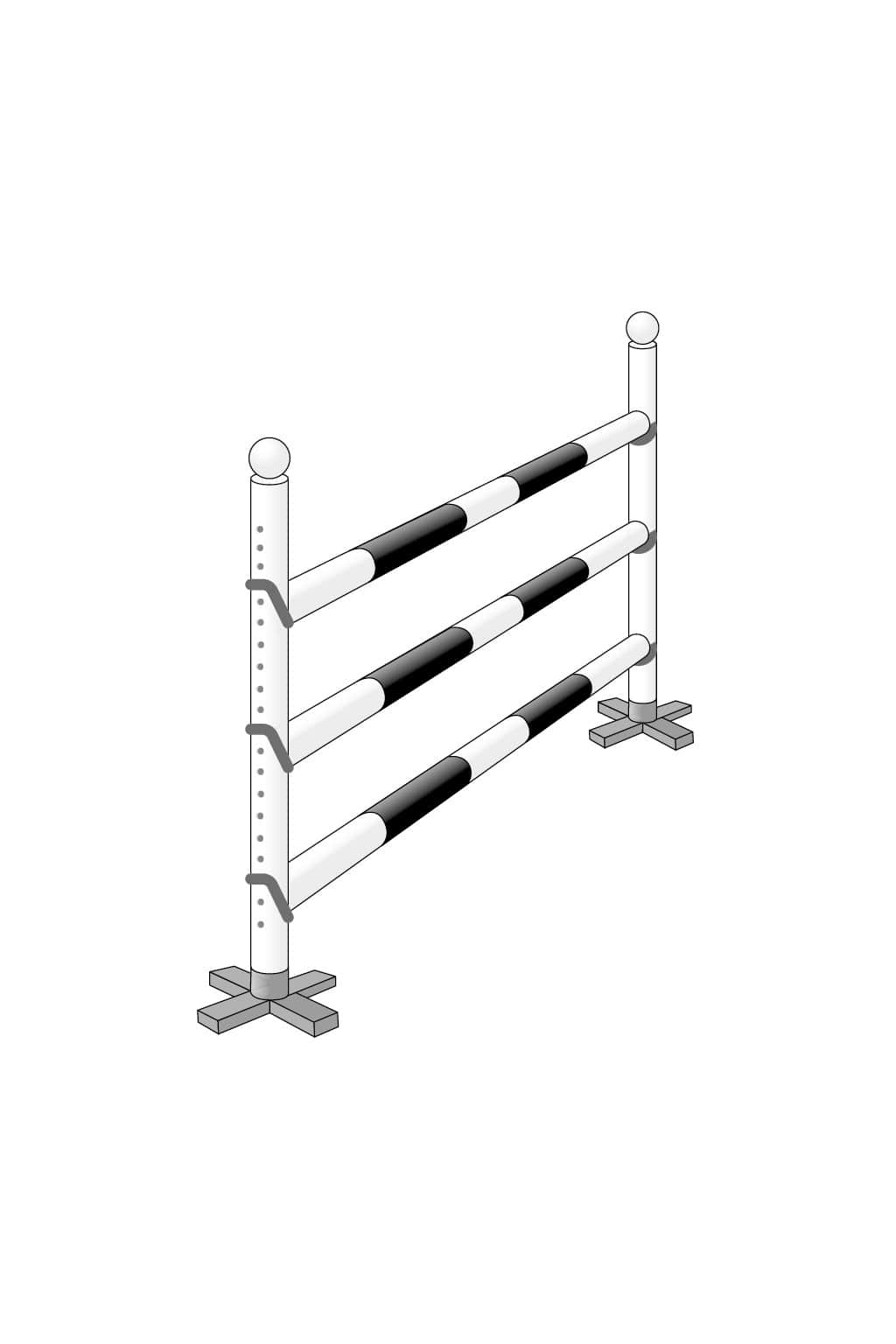 2. Crossrail
2. Crossrail
A crossrail is an obstacle that does not usually appear at competitions. However, they are commonly used in exercises at home.
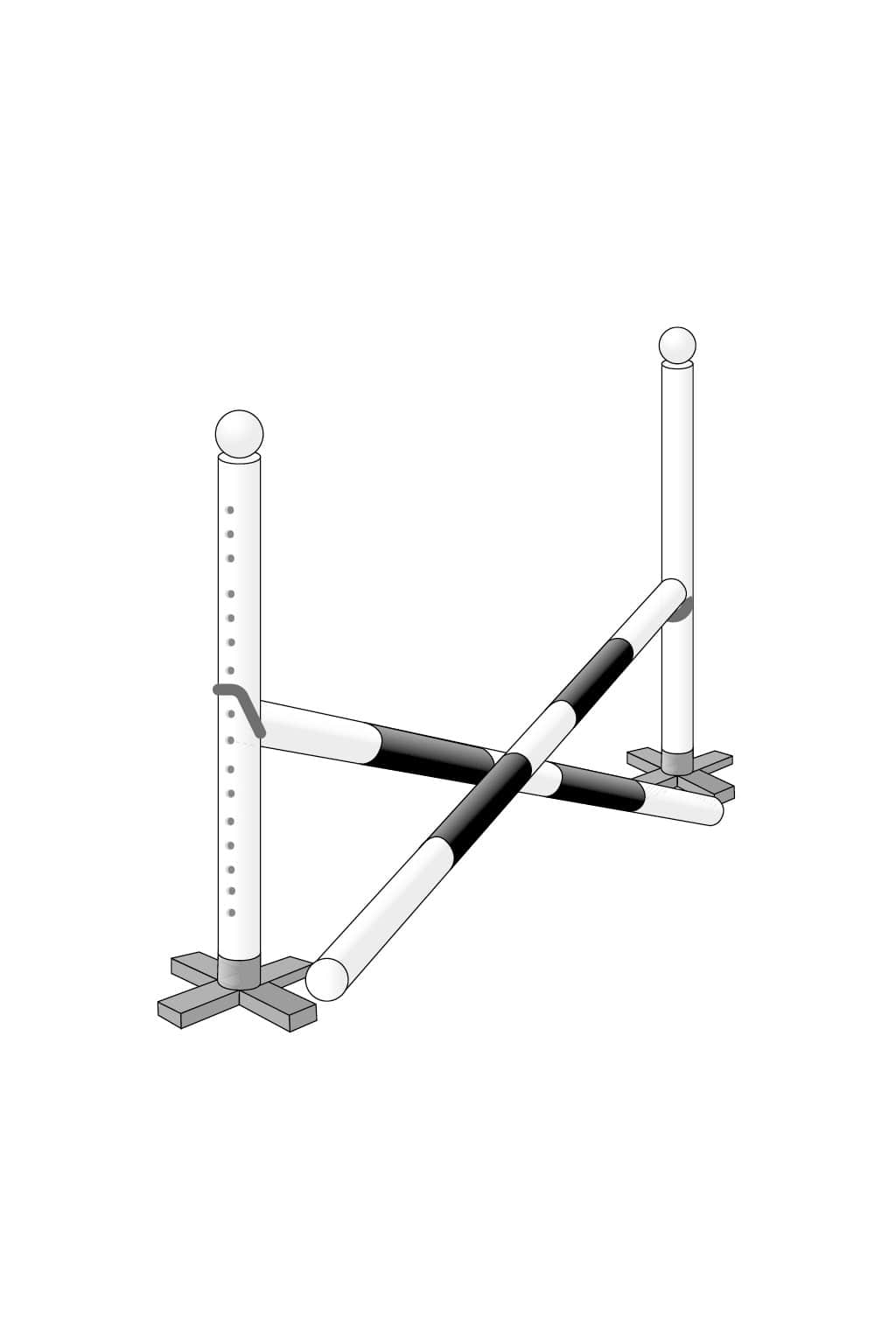 3. Parallel Oxer
3. Parallel Oxer
An oxer consists of two sets of jump stands and poles. The first set is similar to a vertical jump, while the second one simply holds one pole, matching the height of the first set. The width of the oxer varies depending on the horse’s ability and size.
For a parallel oxer, the top pole of both sets of jump stands are at the same height, making the oxer even.
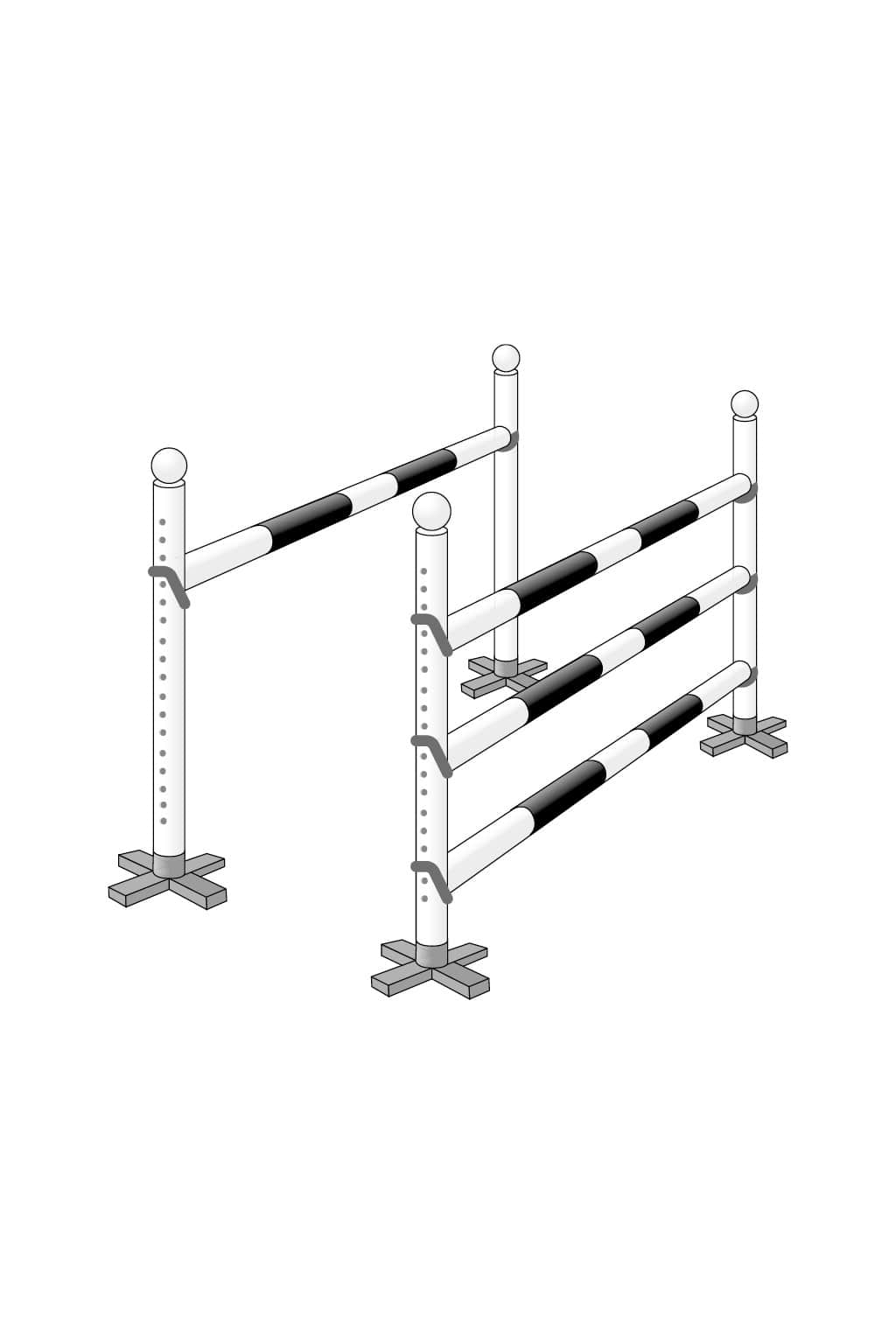 4. Ascending Oxer
4. Ascending Oxer
For an ascending oxer, the top pole of the second set is higher than the top pole of the first set.
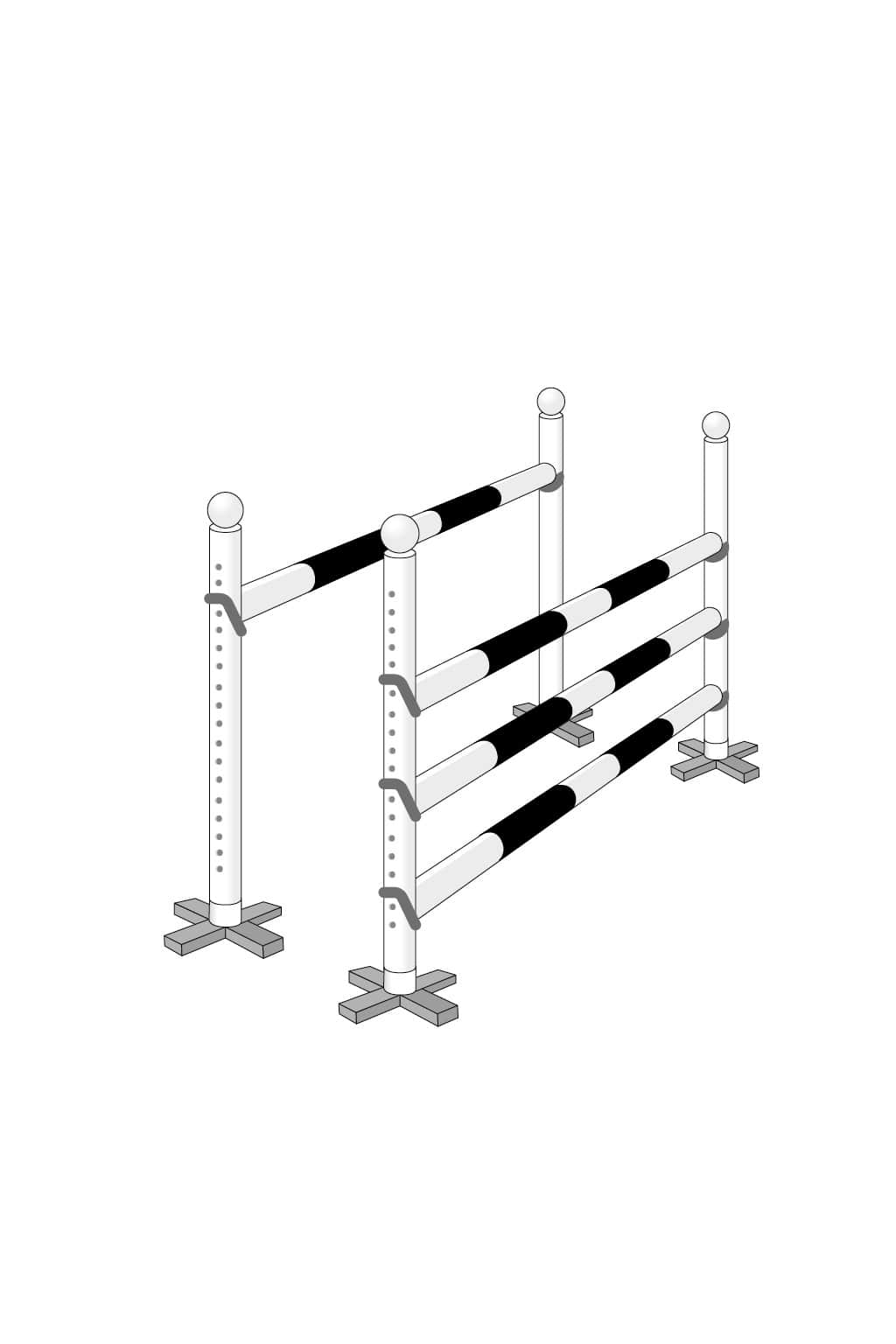 5. Triple Bar
5. Triple Bar
A triple bar is like an ascending oxer, but with three sets. 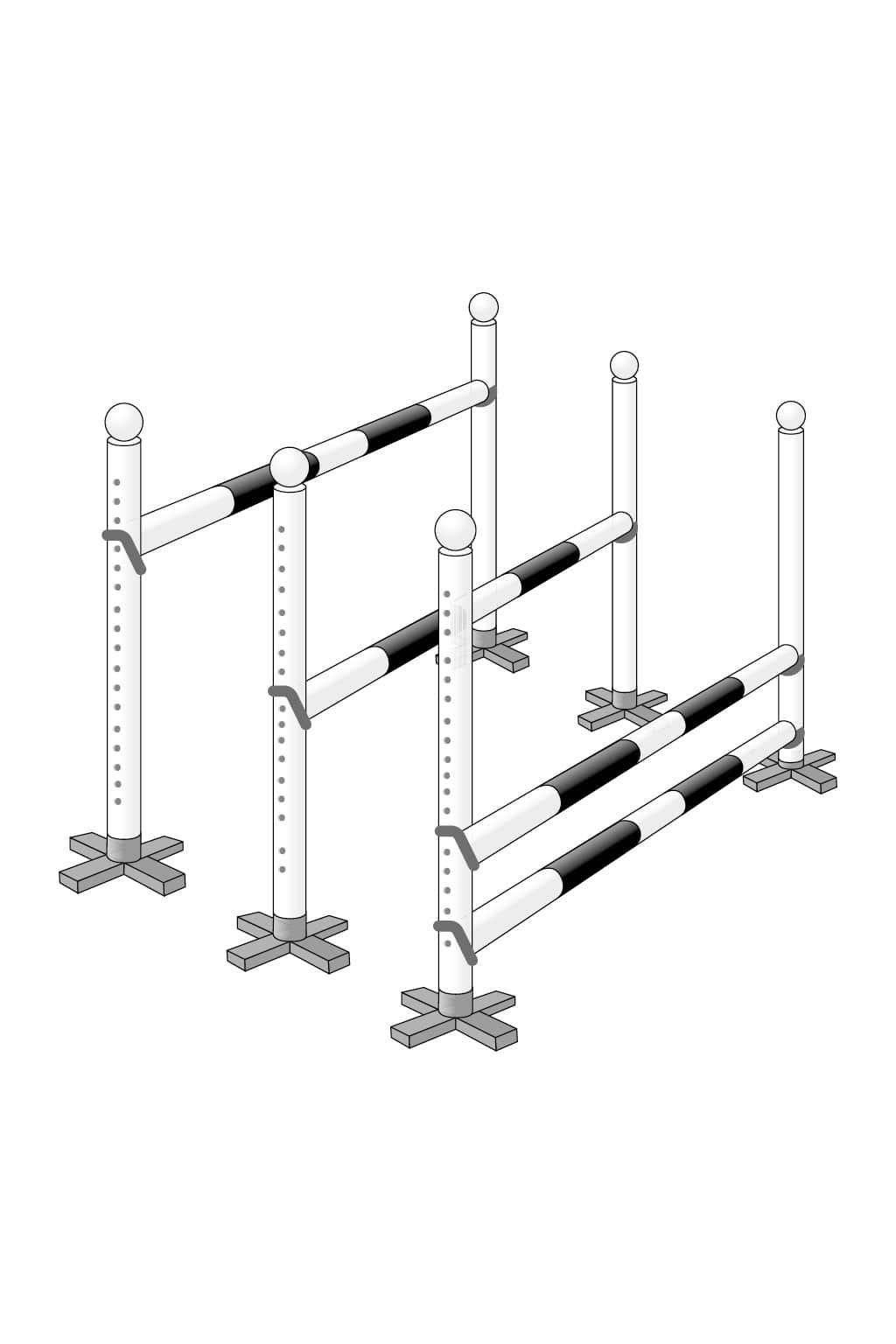
6. Fan
A fan is a jump that, quite literally, looks like a handheld folding fan. Think of a triple bar, but with all poles proceeding from the same stand on one end, while being spread and held separately by three (or more) stands on the other end.
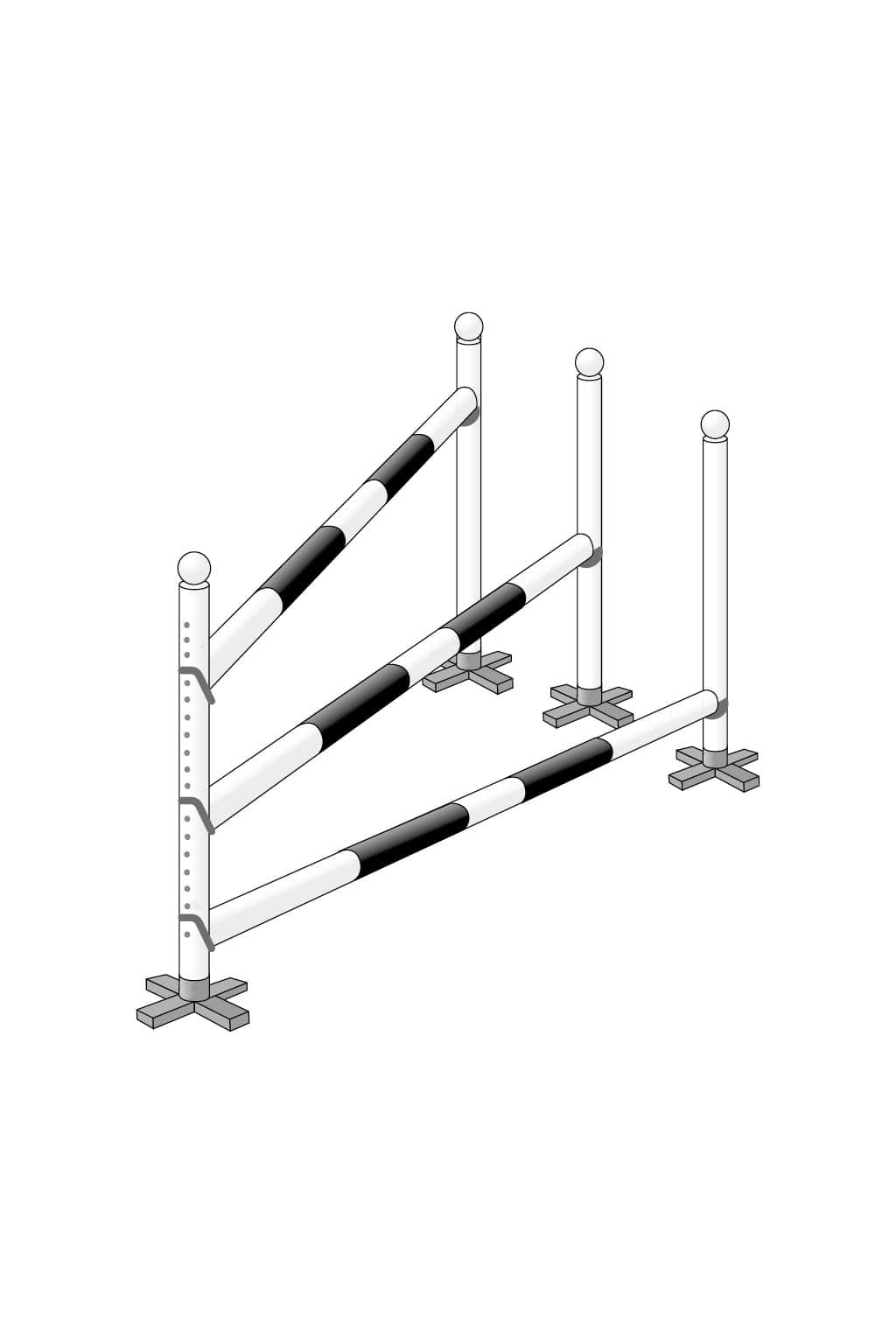 7. Hogsback
7. Hogsback
The hogsback is also similar to a triple bar, but with the middle pole being the highest one.
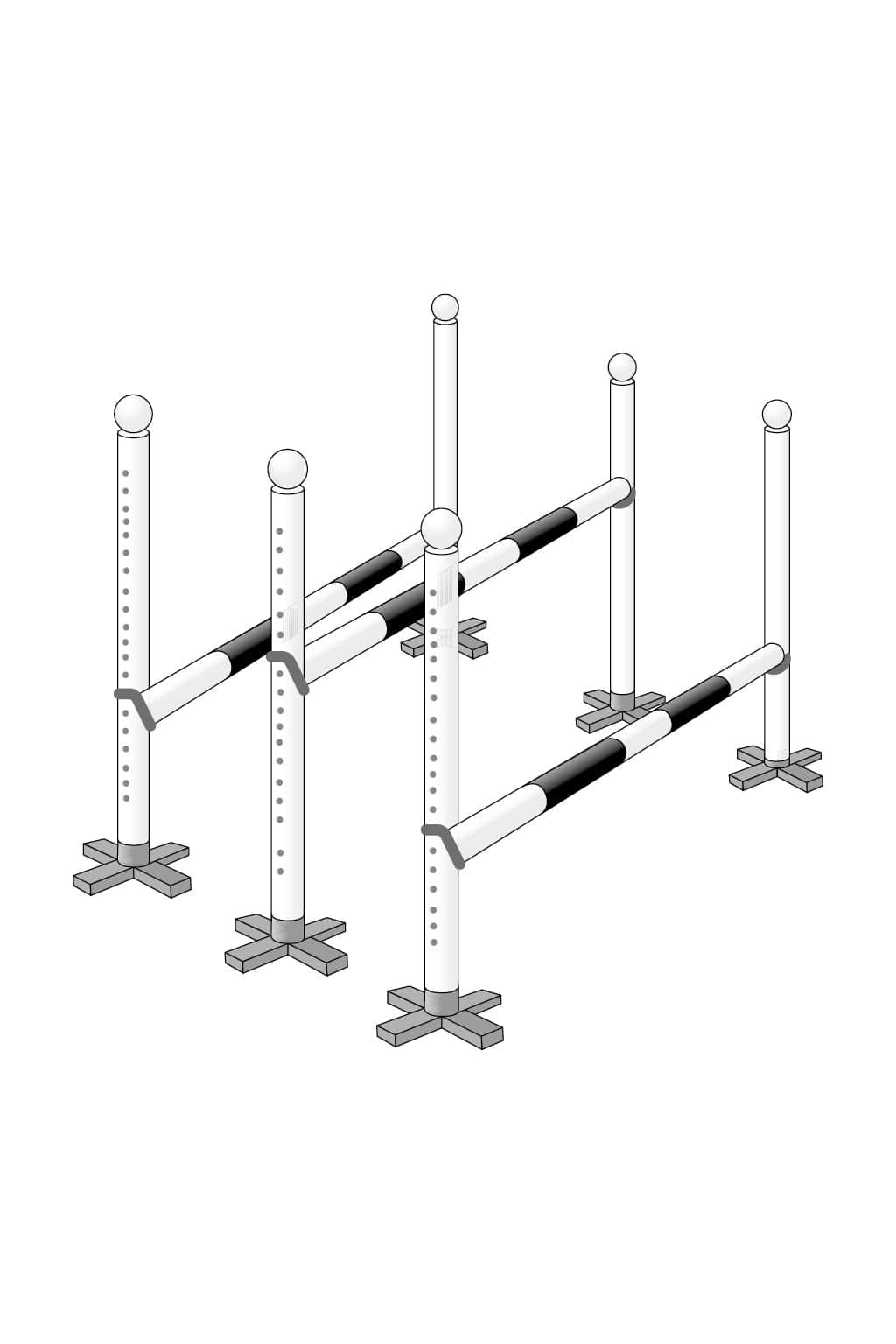 8. Gate
8. Gate
A jump consisting of a gate, being held by two jump stands.
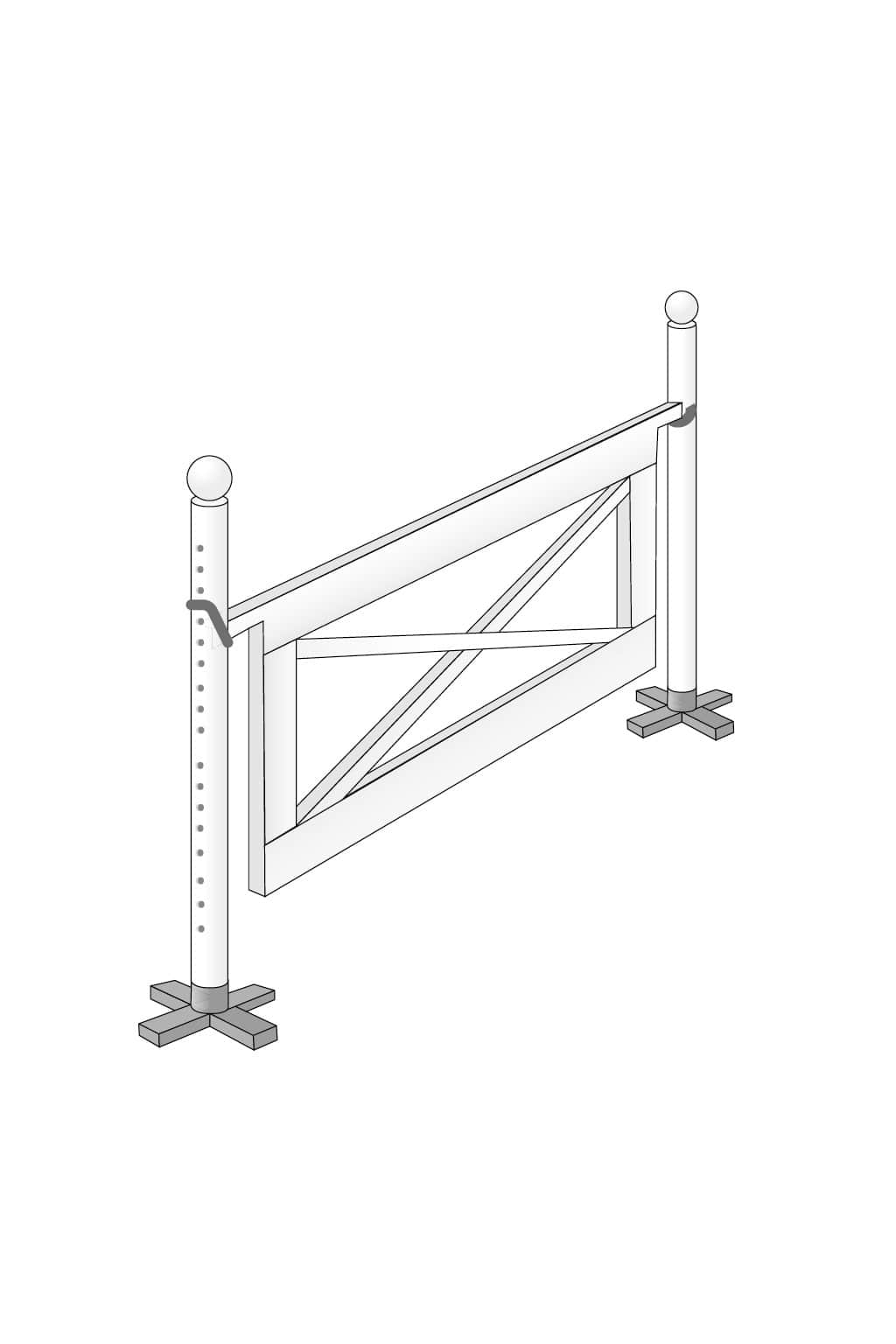 9. Wall
9. Wall
A wall is a jump that resembles a brick wall, and it is built with pieces that make a more massive-looking, solid jump. The stands often look like gate posts or towers.
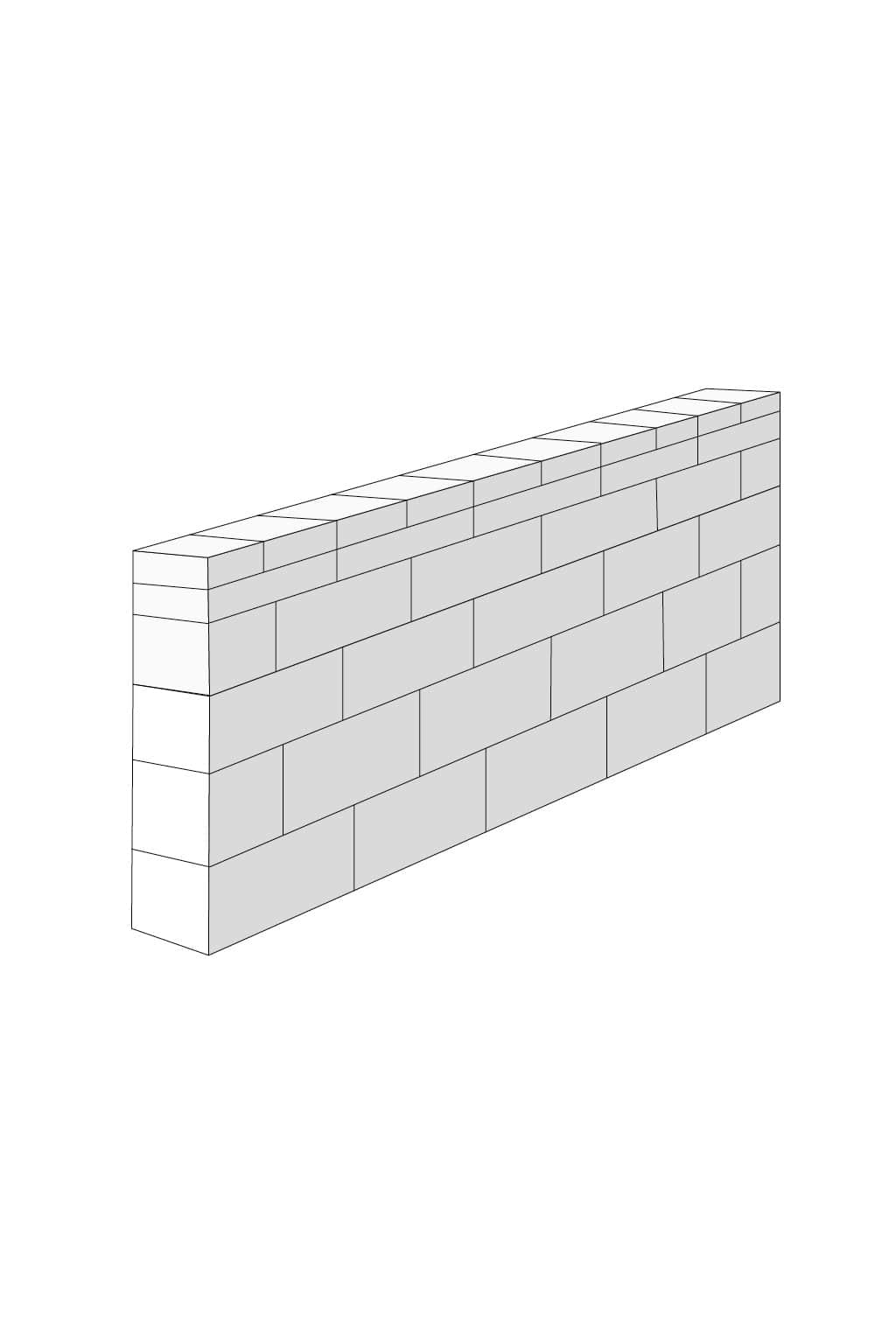 10. Plank
10. Plank
A plank is a vertical built with flat poles (planks).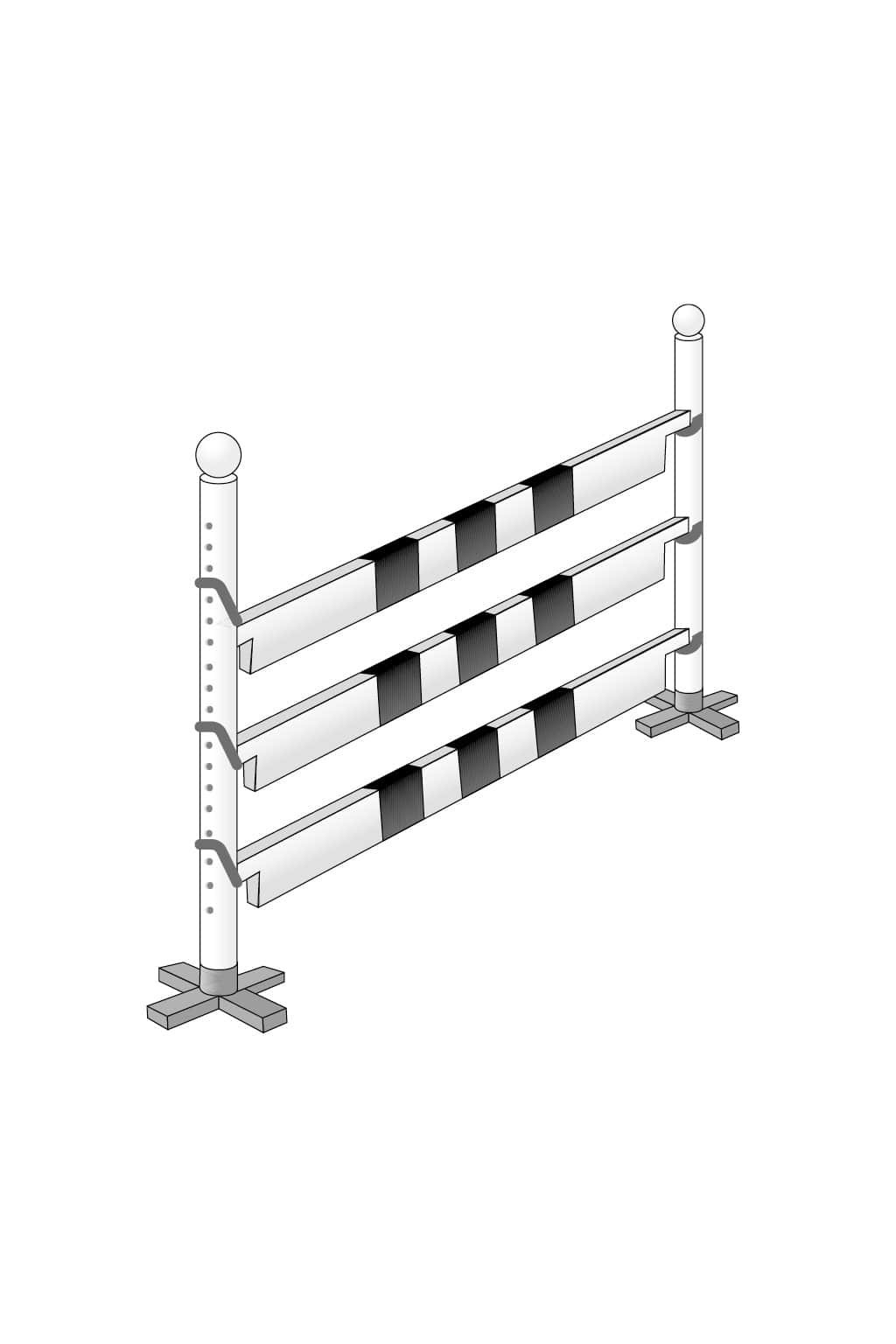
11. Liverpool
A water jump where a water tray is placed under a vertical or an oxer.
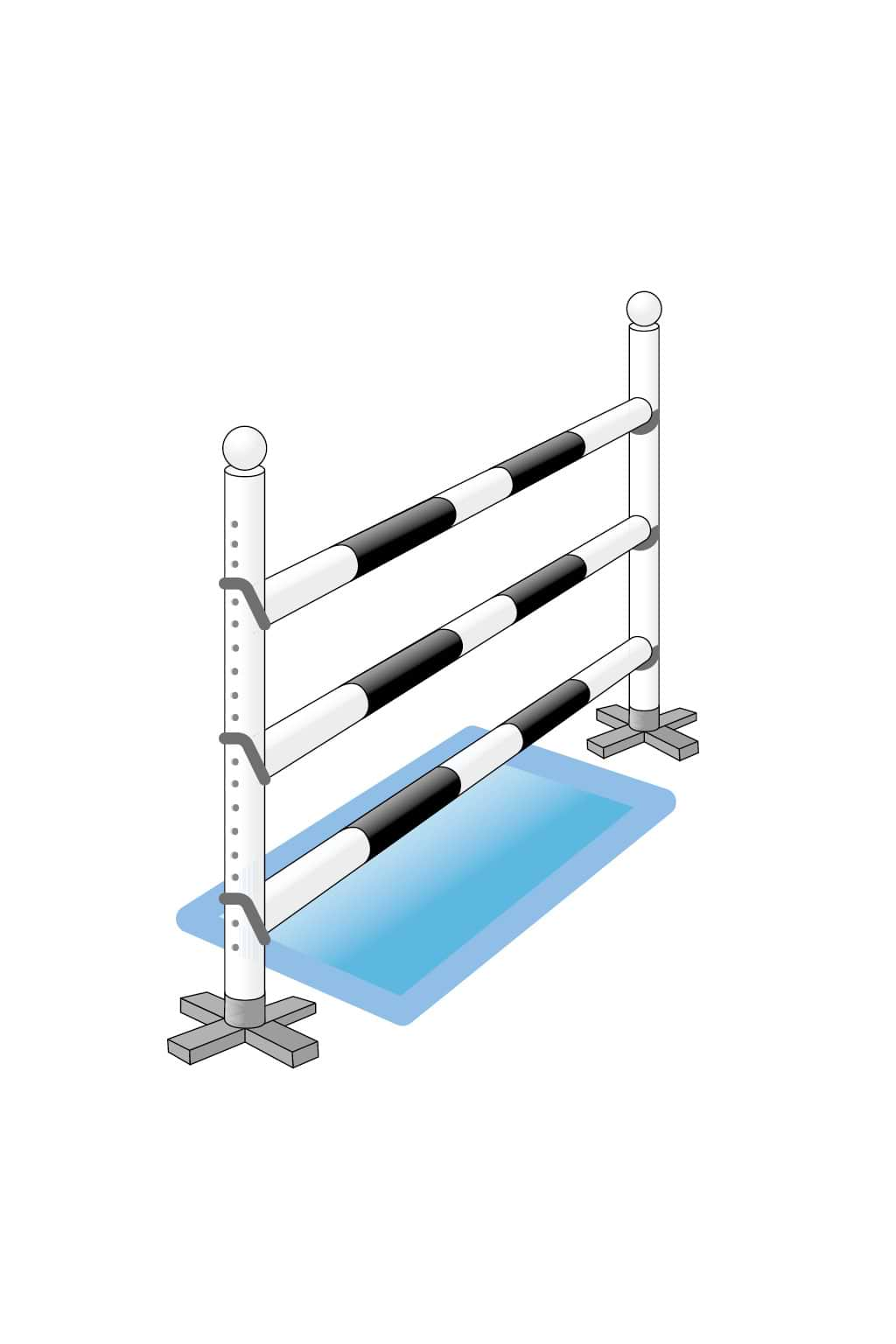 12. Open Water
12. Open Water
A wider water jump where there is a ditch of water behind a vertical or a lower gate, alternatively hedge.
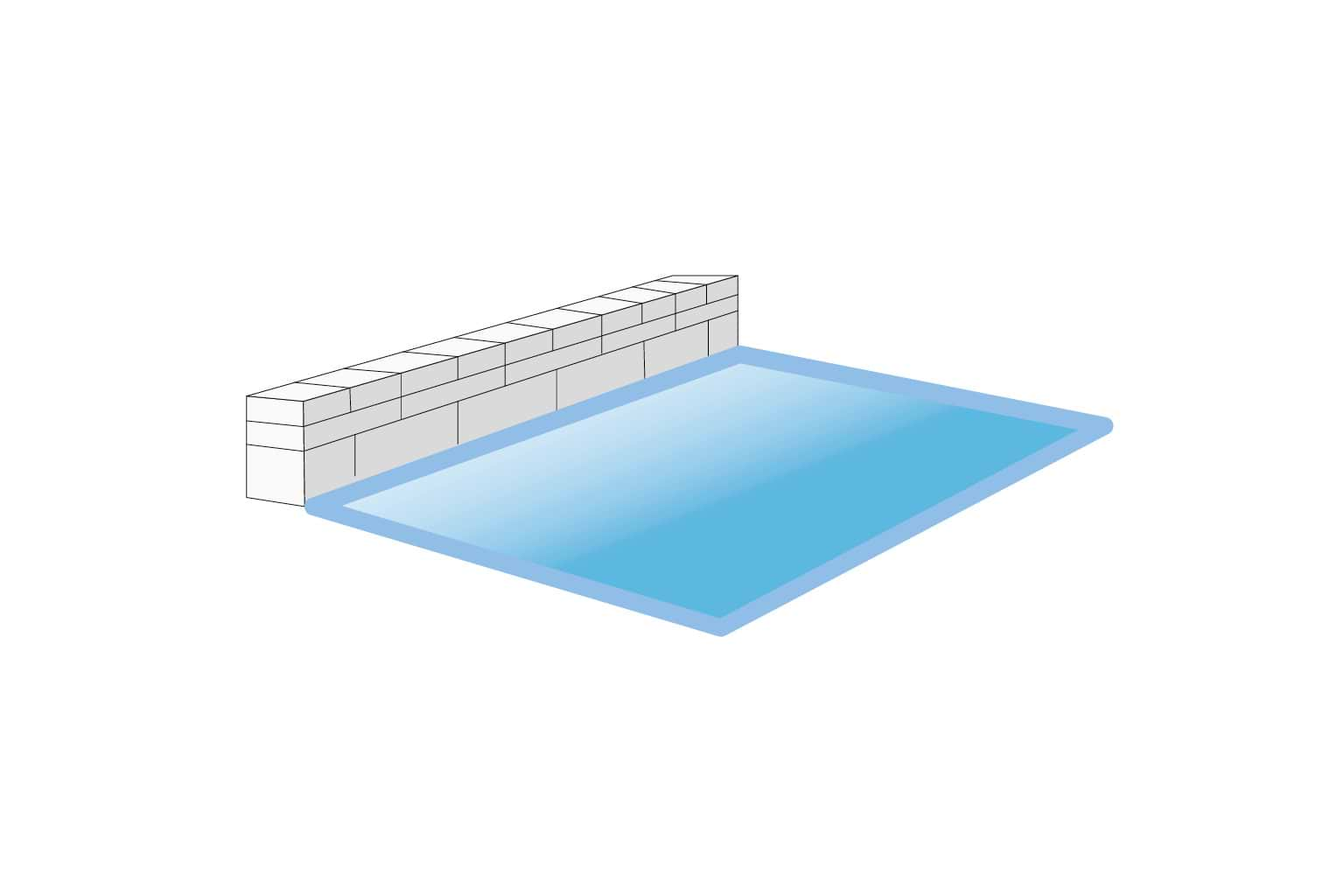 13. Cavaletti
13. Cavaletti
Cavaletti are poles held by smaller, buildable blocks. Cavalettis are used for training sessions and exercises. 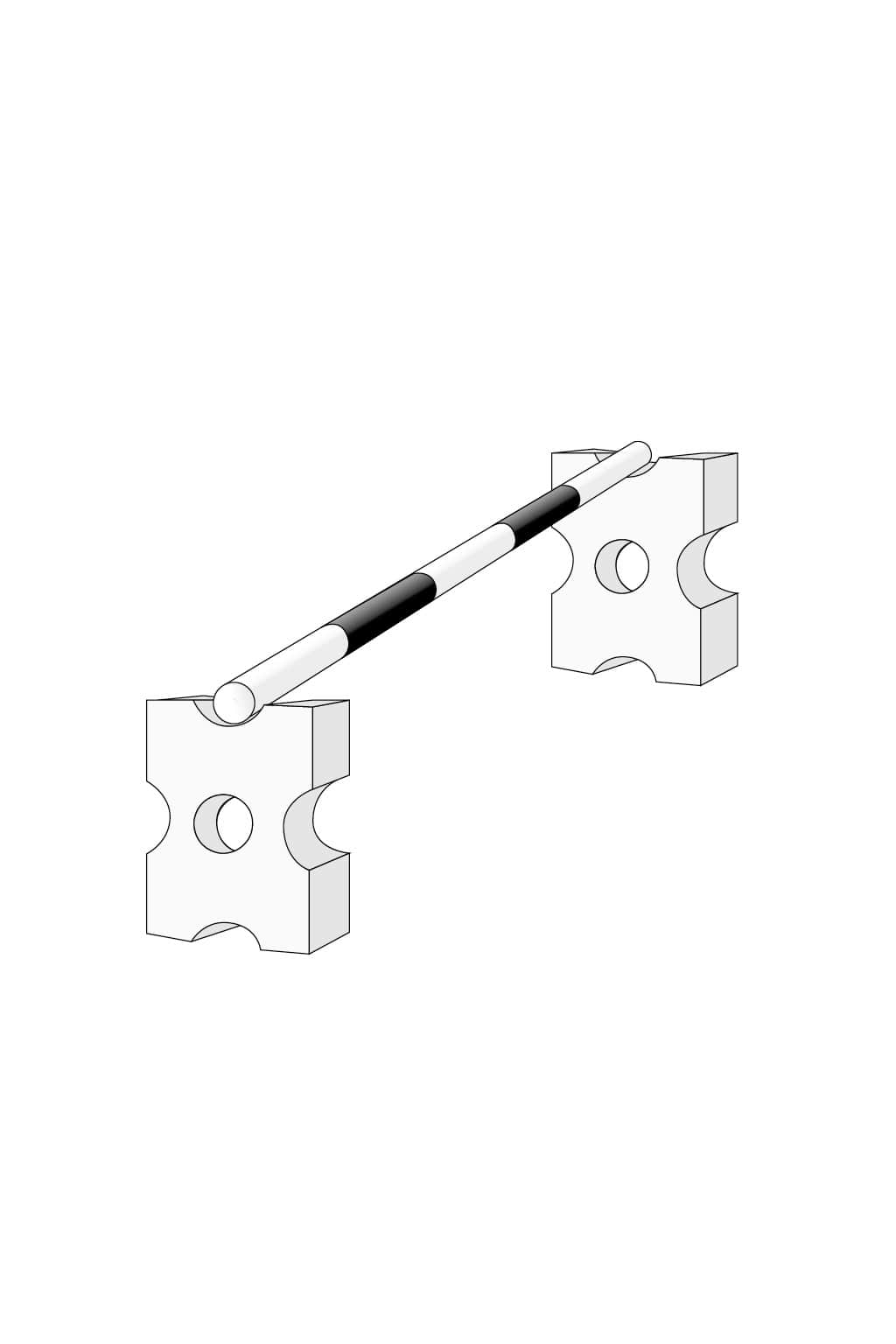
14. Bank
A cross-country obstacle that can be placed in jumping arenas. A bank is a formation similar to a stair step, where the bank’s ground level is higher than the arena’s ground level. You can jump a bank up, down, or across.
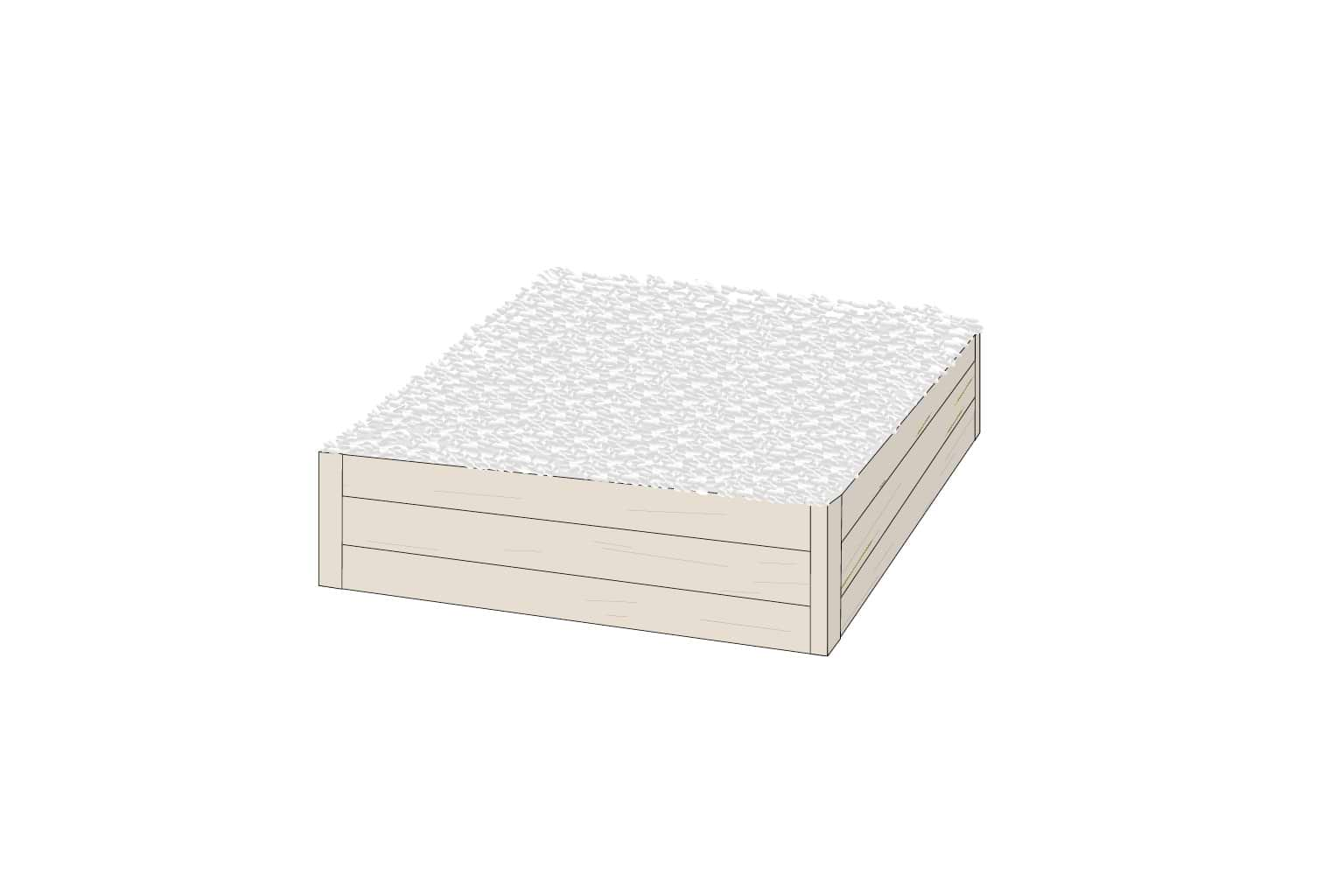
15. Double Combination
A combination is a series of jumps that count as one jump. A combination is usually made up of verticals and oxers, and there is little space between them. The amount of canter strides between the obstacles differs, and the distance between the jumps varies depending on the size of the horse, for example.
A double combination is made with two obstacles.
Psst… check out our Show Jumping Distance Sheet if you haven’t already!
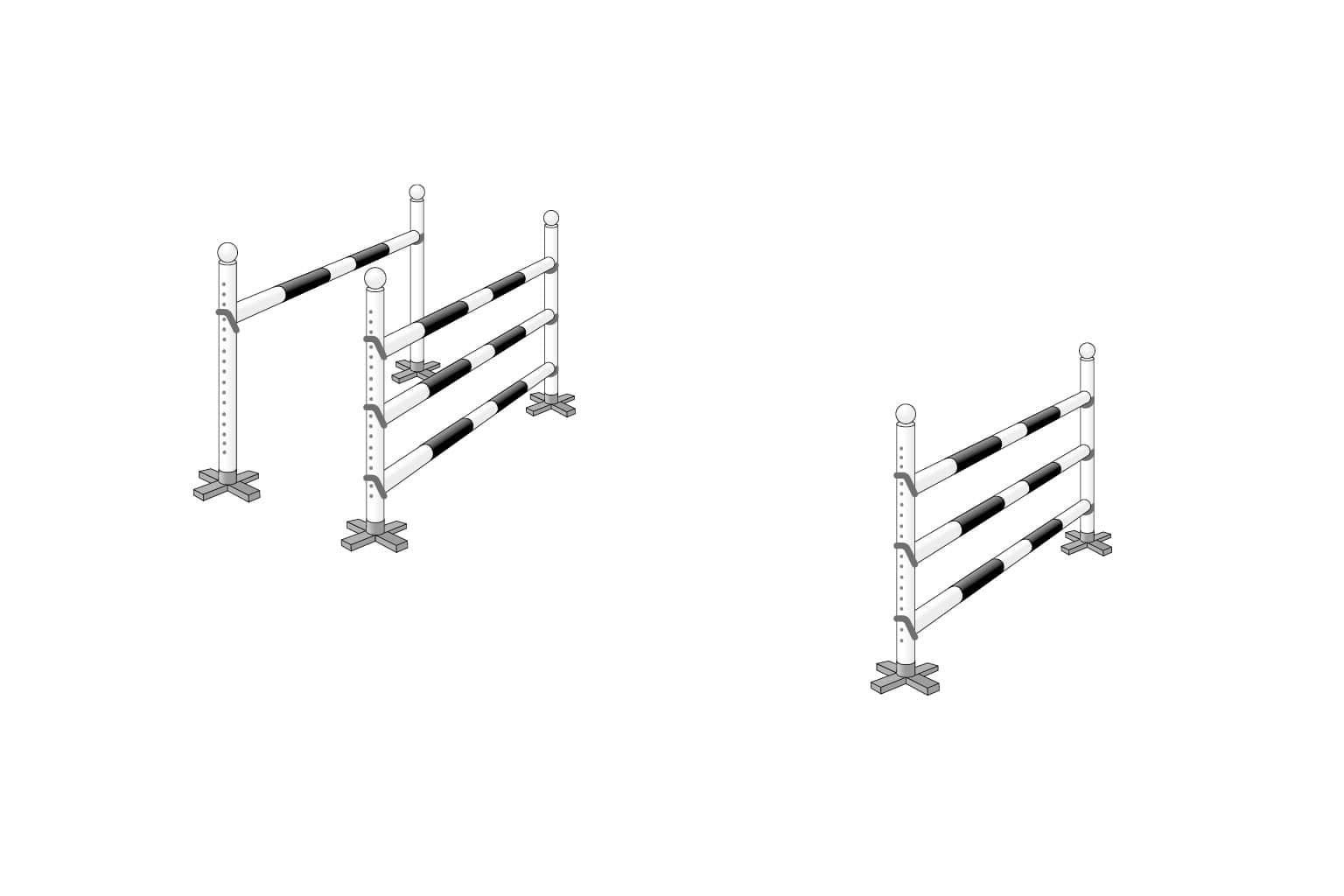
16. Triple Combination
A combination made with three jumps.
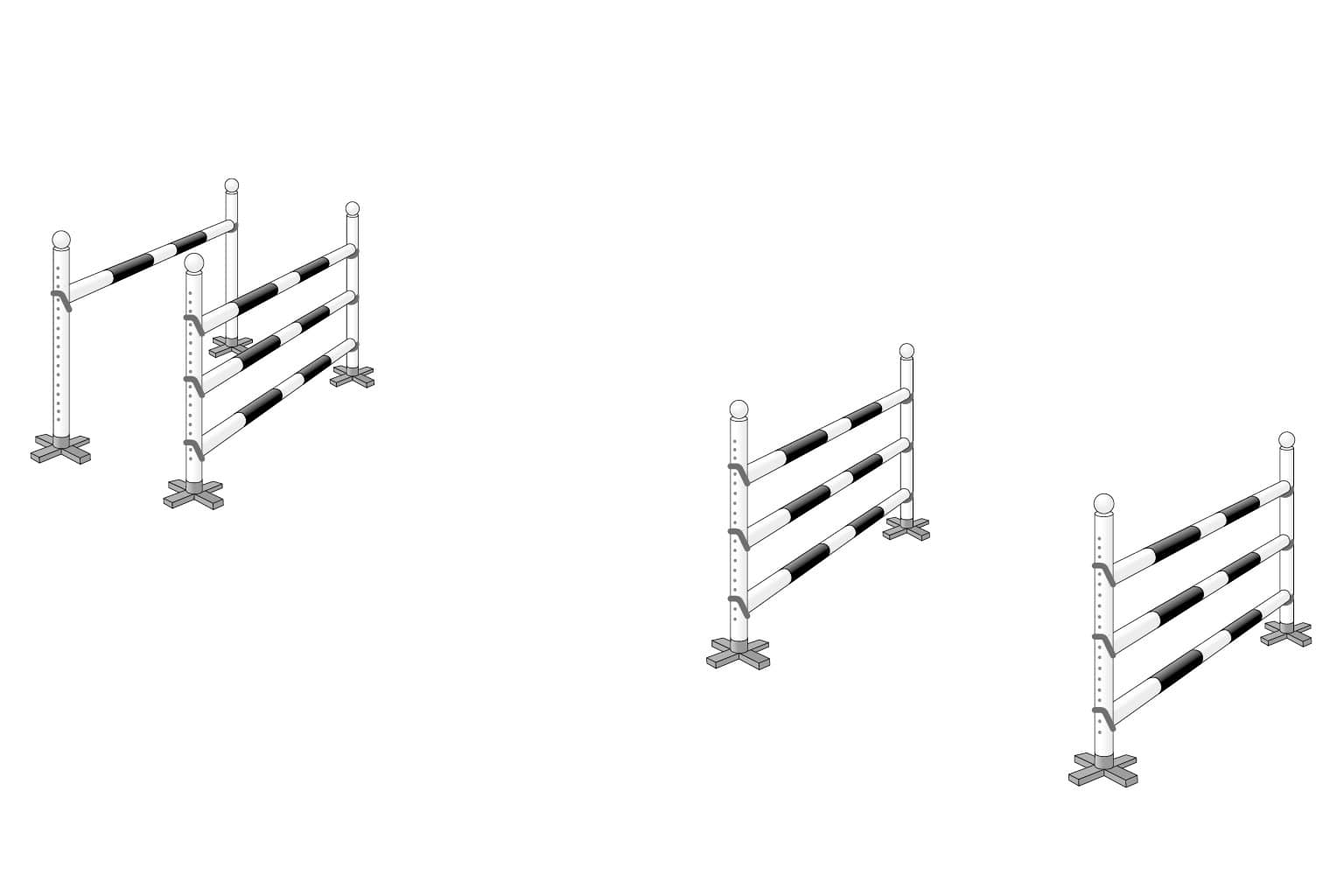 There we go! Which one of these are you trying out today? 😎
There we go! Which one of these are you trying out today? 😎
Remember, this is a selection of different types of jumps in show jumping – there are more of them out there! Also, names and definitions may vary in different traditions or parts of the world.